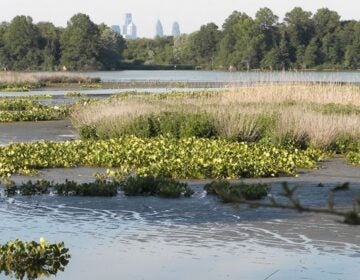Forests Blanketed in Snow – A Good Sign for Groundwater Aquifers
UC Review: Forests Blanketed in Snow – A Good Sign for Groundwater Aquifers
Winter snowstorms are starting to whiten Pennsylvania and many meteorologists are predicting above-normal snowfall for the state this season. The sight of snow-covered forests excites many recreationist including hunters, skiers, and snowmobile enthusiasts. But, forests blanketed in snow should also be appreciated by those who enjoy streams in the summer and rely on groundwater wells and springs for drinking water supplies. That’s because forests and snowpacks together allow for recharge of underground aquifers that consist of trillions of gallons of freshwater stored in the pore spaces and cracks in rock beneath the surface. These aquifers serve to maintain the flow of streams throughout the year and provide water that supports industries, businesses, agriculture, and drinking water for millions of Pennsylvania residents.
The forest creates a perfect environment to capture and slowly melt snow into the ground. The soil under forest canopies acts like a sponge to soak up and pass water from the surface into groundwater aquifers. Where forests are removed, the soil may become compacted or even paved, reducing the amount of water that can infiltrate into the ground to support aquifers. Infiltration of water into the ground occurs most efficiently during times when the forest is dormant. That’s where a thick snowpack become beneficial.
The snow pack that accumulates during the winter insulates the soil underneath it, keeping the soil largely unfrozen and able to absorb water from melting snow. Since trees and other plants are dormant during early spring, most of the snowmelt water entering the soil can infiltrate and recharge groundwater aquifers. The snowpack also represents a large volume of stored water that can be released slowly during the spring melt. A ten inch snowpack covering just one acre may hold 30,000 gallons of water or more. Once the snow is gone and trees leaf-out in late spring, most infiltrating water from summer rainstorms is taken up the roots of the growing trees. This cycle results in high groundwater levels during March and April that typically fall throughout the summer and early fall.
Ground water aquifers that are recharged in the spring by melting snow provide water supply wells and streams with a steady source of cool ground water during the long, hot summer. Fish and other stream life have adapted to the increased stream flows in spring and the relatively cool ground water that is supplied to the stream throughout the summer. Without this spring recharge, stream levels may drop and stream temperatures may increase to dangerous levels during the summer. So the next time you cast a fly over a rising trout or take a drink of water from your well or spring, remember that the combination of undisturbed forests and winter snowpacks provide much of the groundwater that we rely on every day.
The Pennsylvania Forest Stewardship Program provides publications on a variety of topics related to woodland management. For a list of free publications, call 800 235 9473 (toll free), send an email to RNRext@psu.edu, or write to Forest Stewardship Program, Forest Resources Extension, The Pennsylvania State University, 320 Forest Resources Building, University Park, PA 16802. The Pennsylvania Bureau of Forestry and USDA Forest Service, in Partnership with Penn State’s Forest Resource Extension, sponsor the Forest Stewardship Program in Pennsylvania.
WHYY is your source for fact-based, in-depth journalism and information. As a nonprofit organization, we rely on financial support from readers like you. Please give today.






